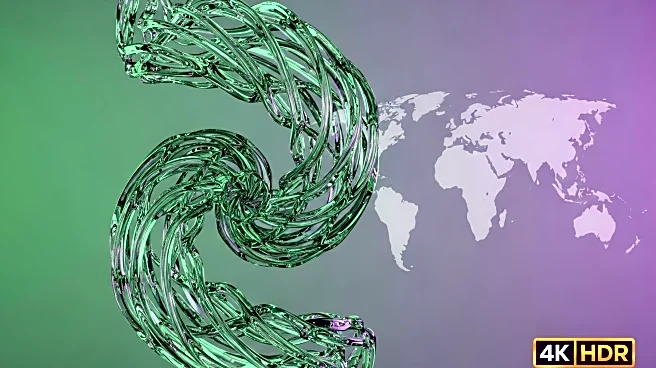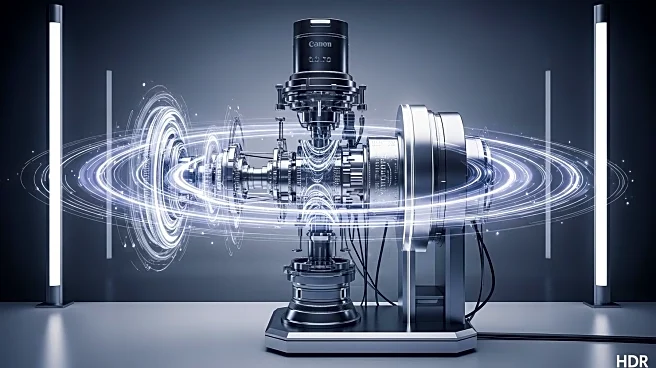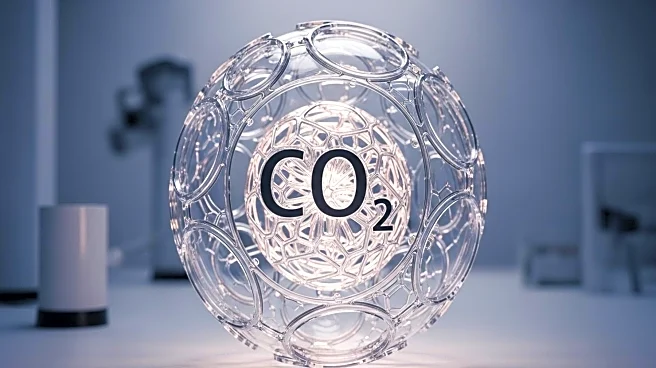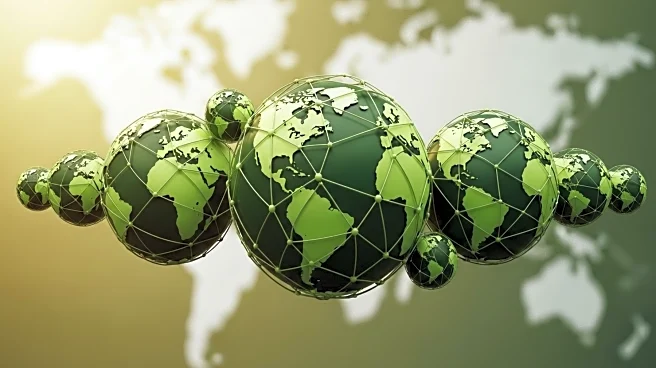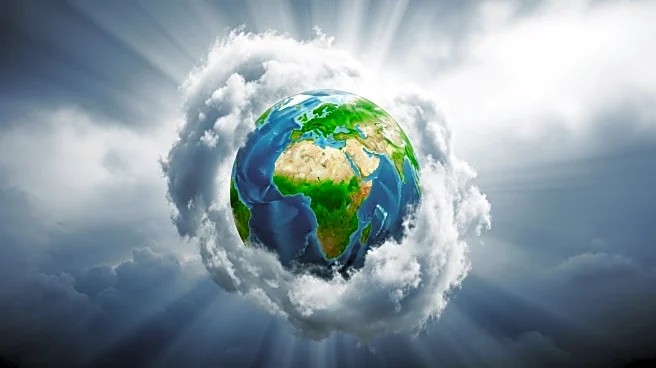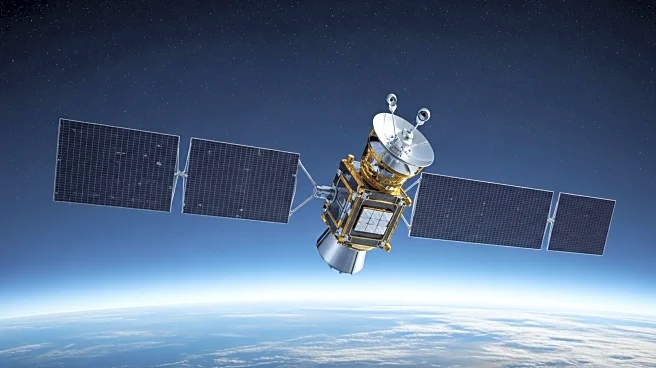What's Happening?
Researchers at the University of Copenhagen have developed a groundbreaking method to convert plastic waste into a material capable of capturing carbon dioxide (CO2) from the atmosphere. This innovation addresses two major global challenges: plastic pollution and the climate crisis. The process involves transforming PET plastic, commonly used in bottles and textiles, into a new material called BAETA. This material can efficiently absorb CO2, offering a sustainable solution to reduce greenhouse gases. The method is designed to be scalable and can be implemented in industrial settings to cleanse exhaust emissions of CO2. The research, published in Science Advances, highlights the potential of this technology to make a significant impact on environmental issues.
Why It's Important?
The development of carbon-capturing plastic represents a significant advancement in environmental technology, offering a dual solution to the pressing issues of plastic waste and climate change. By converting plastic waste into a resource for CO2 capture, this method not only reduces the amount of plastic ending up in landfills and oceans but also contributes to climate mitigation efforts. The ability to scale this technology for industrial use could lead to widespread adoption, providing a new tool for industries to reduce their carbon footprint. This innovation could also create economic incentives for cleaning up plastic waste, potentially transforming environmental challenges into opportunities for sustainable development.
What's Next?
The researchers are focused on scaling up the production of the BAETA material to make it viable for industrial applications. They are seeking investments to transition from laboratory research to real-world implementation. The success of this technology will depend on convincing decision-makers to invest in its development and integration into existing industrial processes. If successful, this could lead to significant reductions in CO2 emissions and a new approach to managing plastic waste. The researchers also aim to collaborate with recycling efforts, targeting plastic that is difficult to recycle due to its condition or composition.
Beyond the Headlines
This innovation challenges the traditional view of environmental issues as isolated problems, suggesting a more integrated approach to solving them. By creating a material that addresses both plastic pollution and climate change, the researchers highlight the interconnectedness of global environmental challenges. The project also underscores the potential for scientific advancements to drive policy changes and economic incentives, encouraging a shift towards more sustainable practices across industries.
